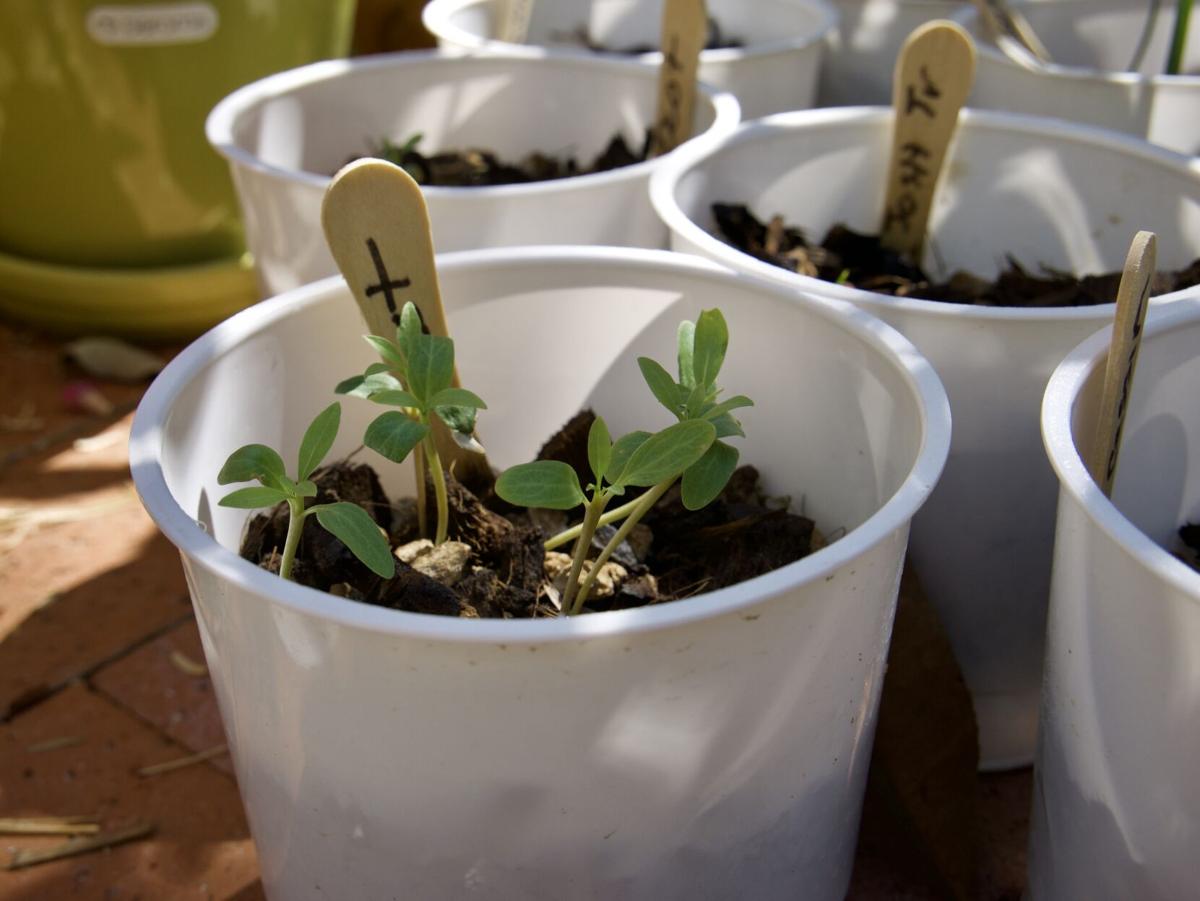Just because you don’t have a big gardening budget doesn’t mean you can’t garden. Whether you’re a student, retired, or just looking to save money, these tips can help you start gardening without a huge cash outlay.
- Make the most of what you have and make sure everything has multiple functions. Use existing plants and buildings, and give each structure or plant several uses. For example, rainwater barrels can double as a fence and shade structure. Citrus plants make great privacy hedges and provide you with shade, fruit, scented flowers, and food for pollinators. An inexpensive trellis can provide vertical gardening space, shade, lush greenery, and — if you plant it with an edible like grapes —food. If you have an old concrete sidewalk or driveway you want to get rid of, use it to build a retaining wall or to set out the borders of a planting bed or path. Use popsicle sticks as plant markers — it’s also more earth-friendly than buying plastic markers.
- Harvest the rainwater — it’s free. The definitive guide for rainwater harvesting in our desert is Brad Lancaster’s “Rainwater Harvesting for Drylands and Beyond.” Passive rainwater harvesting involves creating earthwork structures like berms, swales, and channels to direct water where you want it to go; this is free if you do the work yourself. For active rainwater harvesting, you can make inexpensive collection barrels out of plastic trash cans and PVC pipes you get at the hardware store or plastic containers you find for free. Just make sure whatever was in the container before wasn’t toxic!
- Plant natives. They will not require nearly as much water as non-natives, will not require soil amendments, and will be less maintenance.
- Leave the leaves. Tree and plant litter makes perfect mulch, and it’s free. If you must buy mulch (if, for instance, you have a bare yard), get it in bulk and, if needed, split the cost with friends and family who also garden. If you have a lot of plant debris, you can make your own mulch. You can cut it up yourself with your garden tools, or rent a small chipper/mulcher for about $200 per day.
- Don’t waste money on artificial soil amendments and fertilizer. Even the poorest soil will turn into heavenly, fertile loam if you add enough organic matter (compost or manure), water, and time. Keep in mind that our soils are alkaline. If you want to grow plants that like acidic soil (like blueberries), use containers — it’s much cheaper than buying lots of amendments, and you won’t need to constantly play catchup with the soil pH. If you have the room in your yard, make your own compost instead of buying fertilizer. You can also get free manure from neighbors who have horses, chickens, goats or other livestock. Manure has to be composted or aged in the soil for a few weeks before it is used with plants.
- Don't use pesticides. They will harm native pollinators and are unnecessary in a healthy garden. Attracting spiders, praying mantises, ladybugs, lacewings, and other predatory insects will be free for you and will make for a lower-maintenance garden. You can follow the principles of integrated pest management if you have a severe pest issue.
- Take care of your tools. A good gardening tool can last you many years, but you need to keep it rust-free and oiled and sharpened. Many gardeners use mineral oil to lubricate their shears and pruners; you can also use 3-in-1 oil.
- Use free containers. Examples include plastic bottles, donated pots, livestock watering troughs, or nursery pots. If you have old sinks or toilets they can make great planters. You can even make a bathtub pond for your yard! Just remember that in our climate, outdoor pots should ideally be at least 24 inches wide and deep so plants don’t dry out too quickly; smaller pots will require watering daily or twice daily during the summer. I keep the black nursery pots in the shade so they don’t get too hot in our relentless summer sun.
- Get free or low-cost plants.
- Trade plants, seeds, and plant cuttings with family, friends and neighbors.
- Look for “volunteers” in your garden. These are plants that have sprouted up on their own, and are frequently better suited to your environment than the original store-bought parent plant. You can leave them where they are, or replant them to areas where you want them. You can also transplant volunteer plants from other people’s yards — with permission, of course! Keep an eye out for volunteer plants in your neighbor’s yard, and talk with them about removing any volunteers you are interested in. This is frequently a good source of agave plants, which tend to grow pups fairly prolifically.
- Collect your own seeds from plants you like in your garden and plant them in starter soil. Once the plants are growing, repot them to increasingly larger pots until they get to 2 gallon-size pots. You can then use them in your garden. You can also propagate many plants with cuttings.
It’s a good idea to keep an eye on Craigslist, Freecycle, and other local donation sites for free plants, animal manure and other gardening supplies. I’ve seen concrete, landscaping rocks, pavers, trees, and various other useful things on these sites.
A great starting point for fleshing out these ideas is to learn about permaculture (sometimes called ecological gardening). While much of the information on this is geared towards people looking to grow their own food supply, the core concepts of permaculture will serve you well because their goal is to let nature do most of the work and for humans to provide as few inputs into the garden as possible. Fighting against nature will always cost you — in time, effort, and money.





